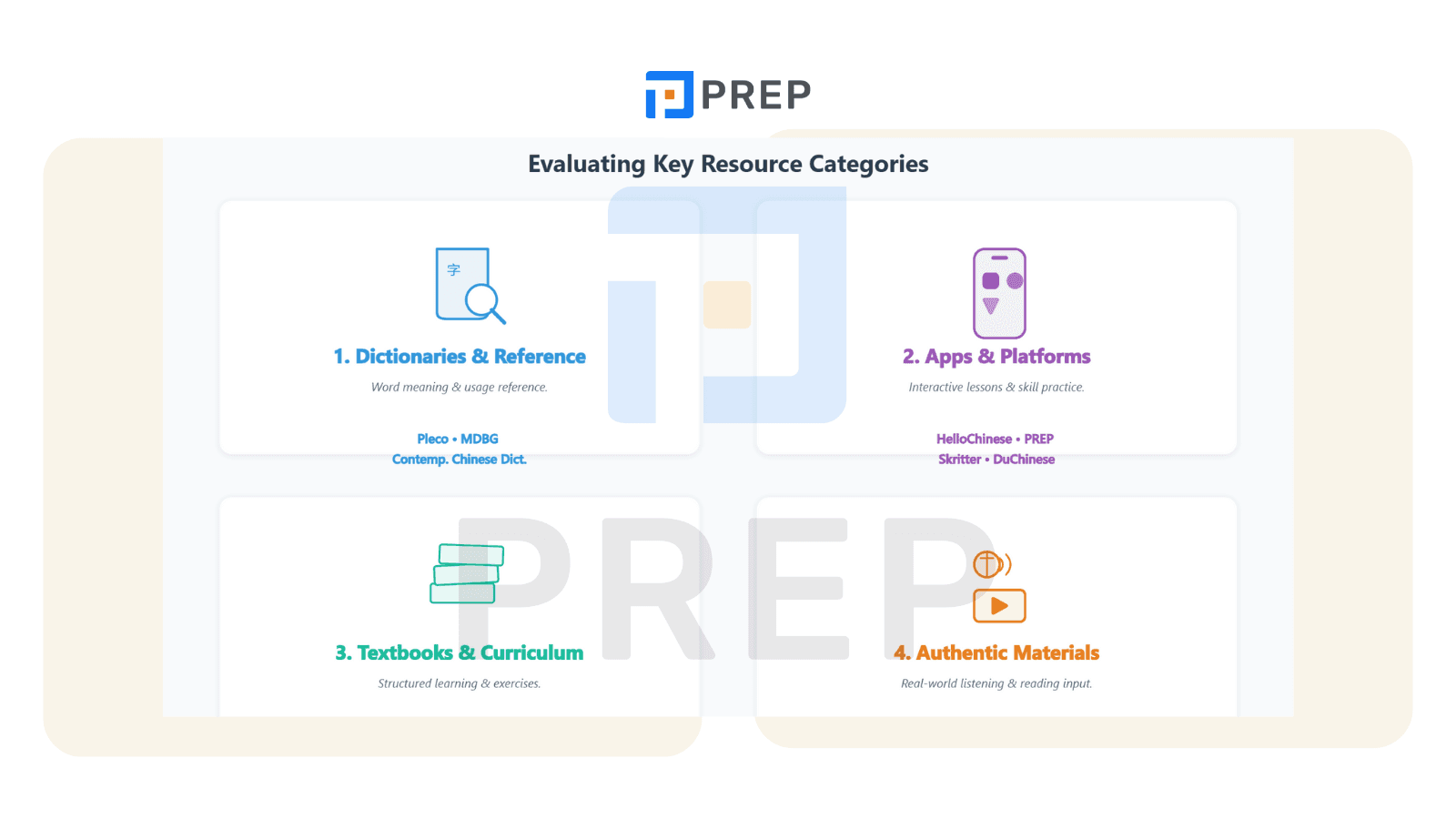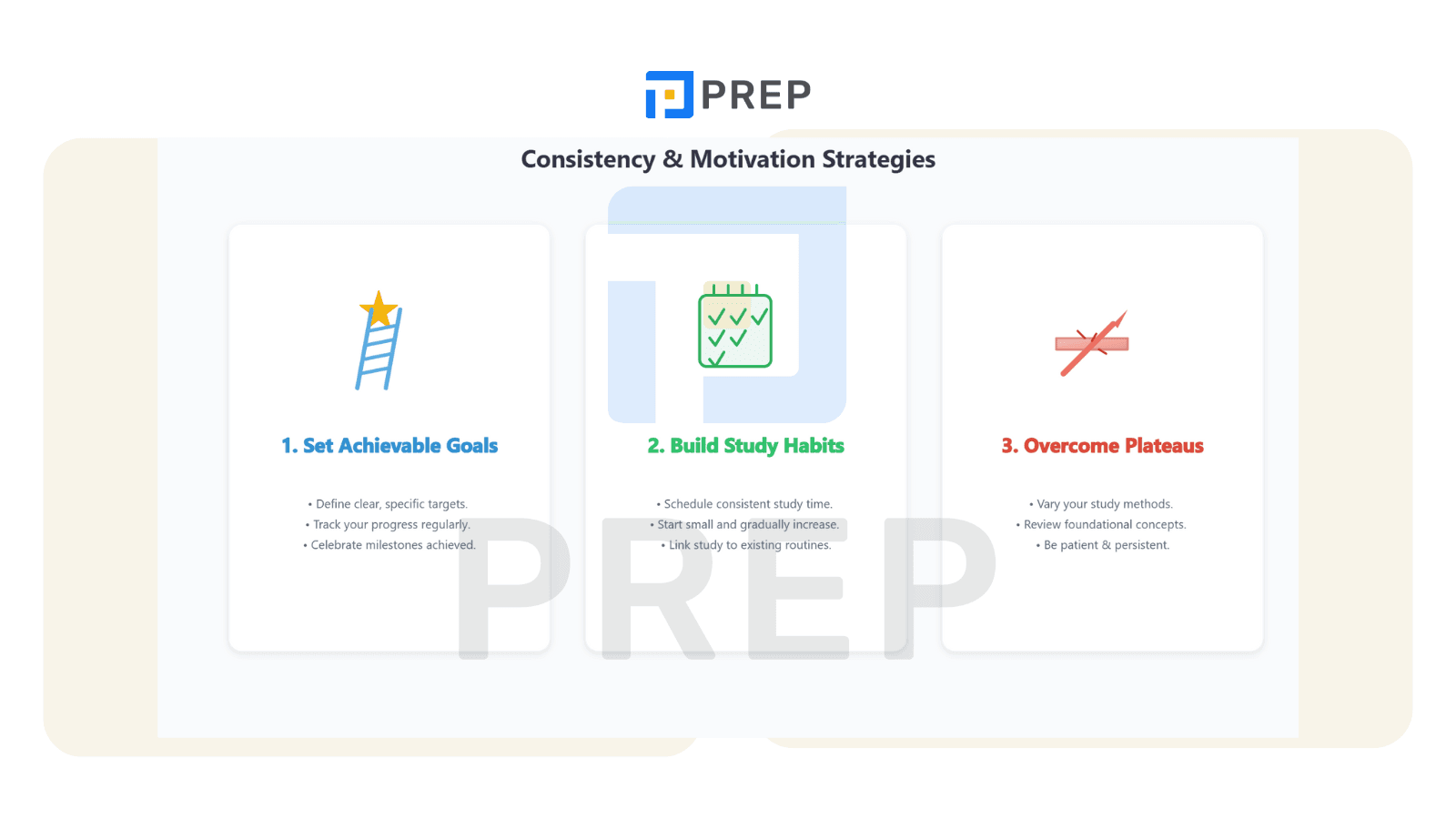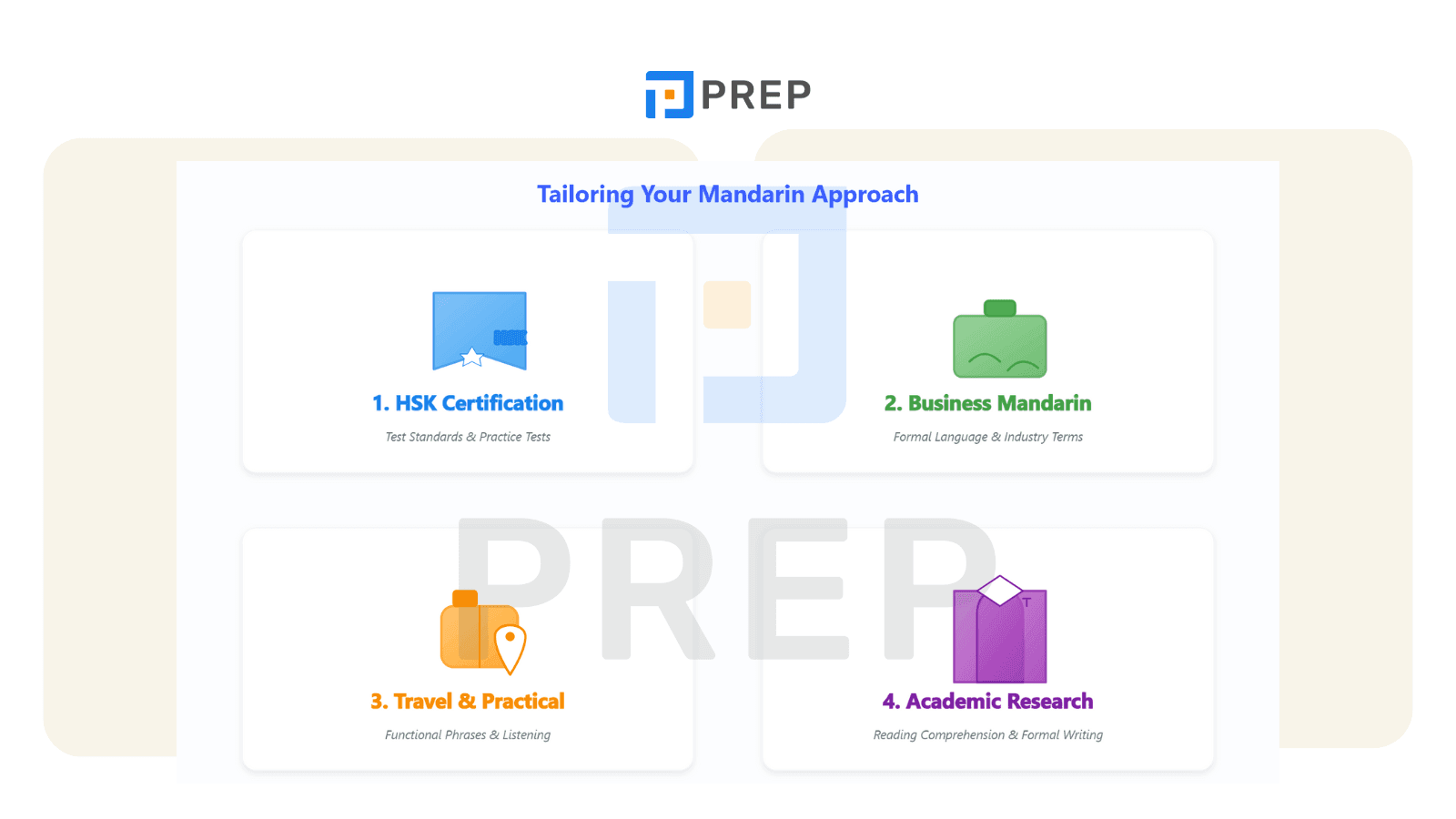Best Way to Learn Mandarin: Comprehensive Guide to Mastering Chinese
When embarking on the journey to learn Mandarin Chinese, many students find themselves overwhelmed by contradictory advice, countless resources, and the language's reputation for difficulty. The search for the "best way to learn Mandarin" often leads to frustration as learners jump between methods without making substantial progress.
This comprehensive guide will help you discover the most effective Mandarin learning path tailored to your unique profile. Rather than prescribing a one-size-fits-all approach, we'll examine how to learn Mandarin Chinese through methods aligned with your goals, learning style, and resources.
The concept of a universal "best way to learn Chinese" is fundamentally flawed. Mandarin presents unique challenges—from mastering the four tones that can completely change a word's meaning to memorizing thousands of characters with complex stroke orders. These challenges affect different learners in vastly different ways. A visual learner might excel at character recognition but struggle with tonal pronunciation, while an auditory learner might show the opposite pattern.
This is why understanding your "Learner Profile" forms the foundation of any successful Mandarin language learning strategy. Your profile encompasses your specific goals (business communication versus cultural appreciation), learning preferences (visual, auditory, or kinesthetic), and practical constraints (available time and budget). How to study Mandarin effectively depends on these personal factors more than any universal method.
The approaches we'll explore range from structured self-study programs to immersive experiences, private tutoring, formal classes, and language exchanges. For each skill area—from pronunciation to character recognition—we'll provide actionable techniques based on research and experienced teaching practices.
Throughout this guide, you'll discover how to assess your learning style and goals to create a personalized Mandarin learning strategy, detailed comparison of learning methods with their advantages and limitations, practical techniques for mastering essential skills like tonal pronunciation and character recognition, strategic resource selection criteria to maximize your learning efficiency, and proven strategies for maintaining motivation and consistent progress. With this framework, you'll avoid common pitfalls that derail progress and instead build a sustainable, effective approach to learning Chinese Mandarin that aligns with your unique needs.
Let's begin by examining why personalization matters in Mandarin learning and how to accurately assess your learner profile to create your most effective learning path.
- I. Overview
- II. Why "The Best Way" to Learn Mandarin is Personal (And How This Guide Helps)
- III. Comparing the Core Mandarin Learning Approaches: Finding Your Fit
- IV. Mastering the Essential Mandarin Skills: Actionable Techniques
- V. Selecting the Right Learning Resources Strategically
- VI. Maintaining Momentum: Consistency & Motivation Strategies
- VII. Tailoring Your Approach for Specific Mandarin Goals
- VIII. Frequently Asked Questions & Deeper Dives
- 1. Is Learning Mandarin Really as Hard as People Say?
- 2. What Are the Main Differences Between Simplified and Traditional Characters, and Which Should I Learn?
- 3. Can I Become Fluent Only Using Free Apps and Resources?
- 4. What Defines "Fluency" in Mandarin Chinese?
- 5. How Does Learning Mandarin Compare to Learning Japanese or Korean?
- 6. What Are the Key Stages Most Learners Go Through When Learning Mandarin?
- 7. AI Tutors vs. Human Tutors for Mandarin: Which Offers Better Value?
- 8. Is It Necessary to Learn Chinese Culture to Learn the Language Effectively?
- IX. Avoiding Common Pitfalls: What Not to Do on Your Mandarin Journey

I. Overview
When searching for the best way to learn mandarin, you'll quickly discover that no single approach works perfectly for everyone. The optimal learning path depends significantly on your personal goals, learning style, available resources, and commitment level. This comprehensive guide aims to navigate you through the complex landscape of mandarin learning methods, providing evidence-based strategies and practical advice to help you design your most effective learning journey. Rather than prescribing a one-size-fits-all solution, I'll equip you with the framework to make informed decisions about which approaches will serve you best in your quest to learn mandarin language.
II. Why "The Best Way" to Learn Mandarin is Personal (And How This Guide Helps)
The concept of a universal "best way to learn mandarin" is fundamentally flawed. Many people search for the best way to learn Chinese, but the truth is that Mandarin Chinese presents unique challenges—from mastering the four tones that can completely change a word's meaning to memorizing thousands of characters with complex stroke orders. These challenges affect different learners in vastly different ways. A visual learner might excel at character recognition but struggle with tonal pronunciation, while an auditory learner might show the opposite pattern.
This is why understanding your "Learner Profile" forms the foundation of any successful mandarin language learning strategy. Your profile encompasses your specific goals (business communication versus cultural appreciation), learning preferences (visual, auditory, or kinesthetic), and practical constraints (available time and budget). Throughout this guide, we'll examine how these factors influence which methods, resources, and techniques will best serve your particular situation as you learn chinese mandarin and decide how to study mandarin effectively.
The approaches we'll explore range from structured self-study programs to immersive experiences, private tutoring, formal classes, and language exchanges. For each skill area—from pronunciation to character recognition—I'll provide actionable techniques based on research and experienced teaching practices. By the end, you'll have the knowledge to construct a personalized learning path tailored to your unique profile and discover the best ways to learn chinese that work for you personally.
1. Understanding Your Unique Learner Profile
Before evaluating specific learning methods, take time to assess yourself honestly. Your learning journey should be built around your particular situation and needs if you want to find the best way to learn mandarin.
1.1 Defining Your Goals (Fluency, HSK, Business, Travel, Hobby?)
Your end goal dramatically shapes your optimal learning path:
-
HSK Certification: If preparing for standardized tests like the HSK (Hanyu Shuiping Kaoshi), focus on systematic vocabulary acquisition, reading comprehension, and listening practice aligned with test requirements.
-
Business Communication: Prioritize formal vocabulary, business etiquette expressions, and practical conversation skills relevant to your industry.
-
Travel Functionality: Concentrate on survival phrases, basic conversational patterns, and practical vocabulary for transportation, accommodation, and dining.
-
Cultural Appreciation: Emphasize understanding context, idioms, and cultural references while balancing reading with listening skills.
-
Academic Research: Focus heavily on reading comprehension, specialized vocabulary, and formal written Chinese.
1.2 Assessing Your Learning Style (Visual, Auditory, Kinesthetic?)
Understanding how you naturally process information can help you select the most effective learning tools when you study mandarin chinese:
Visual learners typically excel with character-based approaches, flashcards, and written materials. You'll benefit from color-coding, character decomposition charts, and video demonstrations.
Auditory learners often grasp tones more readily and should prioritize listening materials, pronunciation practice, and conversation. Podcasts, audio lessons, and regular speaking practice will accelerate your progress.
Kinesthetic learners learn best through physical engagement with the language. Practice writing characters by hand, use gesture-based tone memorization, and incorporate movement into your study sessions.
1.3 Evaluating Your Resources (Time Commitment, Budget)
Realistic assessment of your practical constraints will prevent frustration and abandonment:
Time availability fundamentally determines which approaches are viable. Immersion requires significant daily commitment, while app-based learning can fit into small pockets of time. Be honest about how many hours weekly you can consistently devote to study.
Budget considerations will influence your access to certain resources. Private tutoring delivers personalized instruction but costs more than self-study options. Group classes offer structure at moderate prices, while free resources require more self-discipline and curation.
2. What This Guide Offers: An Evidence-Based Framework for Choosing Your Path
The following sections provide comparative analysis of learning methods, skill-specific techniques, resource evaluation criteria, and motivation strategies—all designed to help you build a learning plan based on your learner profile. Rather than prescribing a generic approach, I'll help you assemble the components of your personalized learning system to discover your best way to learn mandarin.
3. Setting Realistic Expectations: The Mandarin Learning Journey
Mandarin Chinese deservedly has a reputation for difficulty among English speakers, requiring approximately 2,200 classroom hours to reach professional proficiency compared to 600-750 hours for European languages. Many wonder how to easily learn chinese or search for a chinese language easy to learn approach, but this journey demands consistency and patience. Progress often occurs in plateaus rather than steady inclines—periods of apparent stagnation followed by sudden breakthroughs. Understanding this pattern from the outset will help maintain motivation during inevitable challenging periods.
III. Comparing the Core Mandarin Learning Approaches: Finding Your Fit
Understanding the landscape of available learning approaches is crucial to making informed decisions aligned with your learner profile. Each method has distinct advantages and limitations that make it more suitable for certain types of learners. Let's examine each approach systematically to help you identify your optimal combination for how to learn mandarin chinese.
1. Structured Self-Study: The Disciplined Independent Path
Structured self-study involves following organized courses, textbooks, or digital platforms on your own schedule without direct instructor guidance. This approach requires strong self-discipline but offers maximum flexibility for those looking to learn mandarin chinese language.
Advantages:
-
Complete scheduling flexibility
-
Progress at your own pace
-
Often more affordable than instructor-led options
-
Can be tailored precisely to your interests and goals
-
No commuting time to physical locations
Drawbacks:
-
Lacks immediate feedback on pronunciation and grammar
-
Requires exceptional self-discipline and consistency
-
Can lead to knowledge gaps without expert guidance
-
May develop incorrect habits without correction
-
Potentially slower progress in speaking skills
Best For: Highly self-motivated learners with irregular schedules, those on limited budgets, those who enjoy independent learning, and people with specific, focused Mandarin learning goals.
Common self-study resources include comprehensive textbooks (Integrated Chinese, New Practical Chinese Reader), specialized apps (Pleco, HelloChinese, Skritter), online courses (ChinesePod, Yoyo Chinese), and Spaced Repetition Systems like Anki for vocabulary retention.
2. Formal Classes (Online/In-Person): Guided Group Learning
Formal classes provide structured curriculum and regular instructor feedback within a group environment, whether physically in a classroom or through virtual platforms—an excellent option to consider when deciding how to start learning chinese.
Advantages:
-
Systematic curriculum with clear progression
-
Regular expert feedback and correction
-
Built-in accountability through schedules and homework
-
Peer motivation and community
-
Structured assessment of progress
Drawbacks:
-
Fixed schedules may not accommodate everyone
-
Pace determined by the group, which may be too fast or slow
-
Less individual attention than private tutoring
-
Potentially higher cost than self-study options
-
Variable quality depending on instructor and institution
Best For: Learners who benefit from structured environments, those who value accountability and community, beginners seeking foundational knowledge, and those preparing for standardized tests like the HSK.
The quality of formal classes significantly depends on class size (smaller generally means more speaking practice), instructor qualifications (native speakers with teaching experience and qualifications), and curriculum design (communicative approaches versus grammar-translation methods).
3. Private Tutoring: The Personalized Acceleration Route
Private tutoring provides one-on-one instruction customized to your specific needs, goals, and learning pace, either in person or through online platforms. This method can be particularly effective if you're wondering how do i learn chinese efficiently.
Advantages:
-
Completely personalized curriculum and pace
-
Maximum speaking practice and immediate correction
-
Adaptable focus based on changing needs
-
Accountability through scheduled sessions
-
Relationship that can provide cultural insights and motivation
Drawbacks:
-
Typically the most expensive approach
-
Success heavily dependent on tutor quality and compatibility
-
Requires appointment scheduling and coordination
-
Lacks peer interaction and group dynamic benefits
-
May become comfortable rather than challenging without clear goals
Best For: Learners with specific goals or timelines, those struggling with particular aspects of Mandarin, professionals needing specialized vocabulary, and anyone valuing efficiency over cost.
When selecting a tutor, prioritize teaching experience over merely being a native speaker, verify their ability to explain concepts clearly, assess their teaching style compatibility with your learning preferences, and check references or reviews from previous students.
4. Immersion Methods: Living the Language
Immersion creates an environment where you're surrounded by Mandarin, either through physical relocation to a Mandarin-speaking region or creating artificial immersion in your home environment. This approach represents one of the best ways to learn mandarin for motivated learners.
Advantages:
-
Accelerates listening comprehension dramatically
-
Provides authentic context for language use
-
Forces active production and practical application
-
Builds cultural understanding alongside language skills
-
Creates powerful motivation through necessity
Drawbacks:
-
Physical immersion requires significant life disruption and expense
-
Can be overwhelming and stressful, especially for beginners
-
Effectiveness depends on actively engaging rather than withdrawing
-
Home immersion requires extraordinary discipline and creativity
-
May develop fluency but with persistent grammatical errors without correction
Best For: Intermediate to advanced learners ready to accelerate, those with flexibility to relocate or travel, highly motivated learners seeking rapid progress, and those with clear professional or personal motivation.
Even without traveling, you can create partial immersion by changing your device language settings to Chinese, consuming Chinese media daily, labeling household items with Chinese words, finding local language exchange partners, and setting "Chinese-only" time periods for yourself.
5. Language Exchange: Collaborative Practice
Language exchange involves regular conversation practice with native Mandarin speakers who want to learn your language, creating a mutually beneficial learning relationship—an excellent option for those wondering how can we learn chinese language through authentic interaction.
Advantages:
-
Authentic conversation practice with native speakers
-
Cultural insights not available from textbooks
-
Often free or very low cost
-
Builds real friendships and cultural connections
-
Flexible scheduling possibilities
Drawbacks:
-
Unstructured nature may lead to knowledge gaps
-
Quality varies greatly depending on partners
-
May devolve into social time rather than focused practice
-
Requires clear communication about learning goals
-
Limited error correction depending on partner's teaching ability
Best For: Intermediate learners who need conversation practice, those seeking cultural context beyond language, social learners who thrive on interaction, and those with limited budgets.
Popular platforms for finding language exchange partners include HelloTalk, Tandem, and iTalki Community, along with local university international student programs and community cultural centers that often facilitate in-person language exchanges.
IV. Mastering the Essential Mandarin Skills: Actionable Techniques
While your overall approach provides the framework, how you practice specific skills significantly impacts your progress. These techniques can be applied across different learning methods to target the core challenges of Mandarin acquisition.
1. Tackling Tones & Pronunciation Head-On
Mandarin's four tones (plus neutral tone) fundamentally change word meanings—mā (high level tone) means "mother" while mǎ (falling-rising tone) means "horse." Mastering these tones from the beginning prevents severe communication problems later when you learn in mandarin environments.
Effective Techniques:
-
Shadow native speakers religiously: Listen to short phrases and immediately repeat them, mimicking the exact pitch patterns. The Pinyin Chart app provides excellent tone pair drills with visual pitch graphs.
-
Use physical gestures: Draw the tone pattern in the air while speaking. This kinesthetic approach creates muscle memory and visual-physical associations with each tone.
-
Record and compare: Record yourself saying the same phrases as native speakers, then listen critically to identify discrepancies. Speech analysis apps like Speechling can provide visual feedback on your tone accuracy.
-
Practice minimal pairs: Work with words that differ only by tone (mā/má/mǎ/mà) to train your ear and mouth to distinguish and produce subtle differences.
-
Seek targeted feedback: Use platforms where native speakers or teachers can specifically evaluate your tones. General conversation partners may understand you despite tone errors, leading to fossilized mistakes.
The Pinyin system serves as your foundation for pronunciation. Master the correspondence between Pinyin and sounds before tackling characters. Pay special attention to challenging sounds that don't exist in English, such as the "x" (similar to English "sh" but with the tongue position of "ee"), "q" (similar to "ch" but with the tongue position of "ee"), and "r" (similar to English "r" but with the tongue curled back further).
2. Building Robust Listening Comprehension
Listening comprehension in Mandarin presents unique challenges: rapid speech rate, sound linking between words, and tonal variations based on context and regional accents—crucial skills for anyone pursuing mandarin chinese learning. The process of learning in mandarin environments accelerates this skill development significantly.
Effective Techniques:
-
Progressive difficulty training: Begin with materials specifically designed for learners (slower, clearer pronunciation) and gradually introduce authentic content. The Slow Chinese podcast provides excellent intermediate material.
-
Deliberate repeated listening: Rather than passively listening once, actively engage with the same audio multiple times: first for gist, then for specific details, and finally to analyze challenging phrases.
-
Use scaffolding: First listen with dual subtitles (Chinese characters and English), then Chinese-only subtitles, and finally no subtitles. This progression builds independence.
-
Practice active prediction: Pause audio mid-sentence and predict what comes next based on context. This builds the predictive capability native listeners use to process language efficiently.
-
Target specific soundscapes: Deliberately expose yourself to different accents and contexts—formal news broadcasts, casual vlogs, business discussions—to develop versatile listening skills.
Active listening requires engagement rather than background exposure. Fifteen minutes of focused listening practice with note-taking and analysis provides more benefit than hours of passive background audio.
3. Demystifying Chinese Characters (Hanzi)
The character system often intimidates new learners, but approaching it systematically makes it manageable. Chinese characters follow logical patterns, with many being comprised of semantic components (radicals) that provide meaning clues and phonetic components that hint at pronunciation—essential knowledge for those who want to study chinese mandarin thoroughly. Many students wonder how to learn chinese language effectively, and character learning is a crucial component of this process.
Effective Techniques:
-
Learn the most frequent characters first: The 1,000 most common characters cover approximately 90% of everyday written Chinese. Focus on these before tackling rare characters.
-
Use the components system: Rather than memorizing whole characters, learn the approximately 214 radicals and common components. This turns character learning from rote memorization to pattern recognition.
-
Implement spaced repetition: Use SRS systems like Anki or Pleco's flashcard function to optimize review timing. These systems show you characters just before you're likely to forget them.
-
Practice handwriting selectively: While typing recognition is sufficient for many goals, handwriting reinforces character learning through muscle memory. Focus on writing the most essential characters.
-
Learn characters in context: Rather than isolated study, learn characters within words and sentences. This reinforces their usage and meaning connections.
The most efficient approach combines frequency (most common first), context (meaningful usage), and components (understanding internal character logic). Character learning should proceed alongside speaking and listening rather than as a prerequisite.
4. Developing Confident Speaking Abilities
Speaking often becomes the bottleneck skill due to psychological barriers—fear of making mistakes, perfectionism, and anxiety about tones often prevent practice that would lead to improvement. This can be a major hurdle for those who seek the ways of mandarin chinese language learning to speak confidently.
Effective Techniques:
-
Build a phrase inventory: Start with complete, practical phrases rather than constructing sentences from scratch. Having ready-made expressions reduces cognitive load during conversations.
-
Create safe practice environments: Begin speaking with supportive tutors or language partners before attempting high-pressure situations. Gradually increase challenge as confidence builds.
-
Use preparatory scaffolding: For important conversations, prepare and practice key phrases in advance. This creates islands of fluency within conversations.
-
Implement the 3-2-1 technique: Explain the same topic for 3 minutes, then 2 minutes, then 1 minute. This builds fluency through repetition while forcing increasingly efficient expression.
-
Embrace error correction: Actively seek feedback on speaking errors and immediately implement corrections. Record your practice sessions to identify recurring issues.
Speaking improvement requires pushing beyond comfort zones while maintaining sufficient confidence to continue practicing. The balance is maintaining 70-80% success with 20-30% challenge in each practice session.
5. Understanding Mandarin Grammar Intuitively
While Mandarin grammar lacks conjugation and grammatical gender, it presents different challenges for English speakers, including measure words, aspect particles, and word order variations—important considerations for those looking to study mandarin chinese effectively.
Effective Techniques:
-
Focus on patterns, not rules: Instead of memorizing abstract rules, collect examples of common patterns and practice them until they feel natural. The pattern "topic + comment" (rather than strict subject-verb-object) structures many Chinese sentences.
-
Master measure words through categories: Rather than learning each word's measure word separately, understand the semantic categories that share measure words (flat objects use 张 zhāng, long thin objects use 根 gēn).
-
Practice with substitution drills: Use a correct sentence as a template, then substitute different nouns, verbs, or time expressions while maintaining the structure.
-
Identify grammar pivots: Learn how function words like 的 (de), 了 (le), and 过 (guò) transform sentence meaning, and practice manipulating them within sentence structures.
-
Analyze chunks of natural language: Rather than studying isolated sentences, examine paragraphs from authentic materials to understand how grammar functions in extended discourse.
Grammar in Mandarin is best understood as conventional patterns rather than rigid rules. The most efficient approach focuses on high-frequency structures and common exceptions rather than comprehensive coverage of rare constructions.
V. Selecting the Right Learning Resources Strategically
The abundance of Mandarin learning resources requires disciplined selection based on objective criteria rather than marketing claims or popularity. The right resources align with your learner profile and complement your chosen methods to provide you with the best way to learn mandarin chinese.
1. Core Criteria for Choosing Any Mandarin Resource
-
Level and Goal Alignment: Resources should match your current proficiency while stretching you appropriately toward your specific goals. Business Mandarin resources will differ substantially from academic or travel-focused materials.
-
Accuracy and Authenticity: Resources should provide authentic language as actually used by native speakers, not oversimplified or artificially constructed examples. Check resources for native speaker involvement in their creation.
-
Engagement and Sustainability: Even excellent resources fail if you don't use them consistently. Honest assessment of what keeps you engaged matters more than theoretical quality.
-
Feedback Mechanisms: The best resources provide ways to check your understanding and correct errors, whether through answer keys, interactive exercises, or direct human feedback.
2. Evaluating Key Resource Categories
2.1 Dictionaries and Reference Tools
Quality dictionaries provide not just translations but example sentences showing usage in context, audio pronunciation, character decomposition, and stroke order demonstrations. Pleco stands out as an exceptionally comprehensive mobile dictionary, while MDBG offers solid web-based reference. For advanced learners, monolingual Chinese dictionaries like the Commercial Press Contemporary Chinese Dictionary provide deeper understanding.
2.2 Learning Apps and Platforms
Effective apps balance engagement with pedagogical soundness. Look for progressive difficulty, research-based learning methods, and comprehensive coverage of all language skills. HelloChinese and PREP offer structured coursework with clear progression paths, while specialized apps like Skritter (character writing) and DuChinese (graded readers) excel in specific skill areas. These platforms offer some of the best ways to learn mandarin for tech-savvy learners.
2.3 Textbooks and Curriculum Materials
Strong textbook series provide systematic vocabulary introduction, authentic dialogues, cultural notes, and exercises targeting all language skills. They should include audio components and answer keys for self-study. The New Practical Chinese Reader, Integrated Chinese, and Discovering Chinese series represent solid options with different emphasis areas for those who want to learn mandarin chinese language systematically.
2.4 Supplementary Authentic Materials
As you progress, authentic materials become increasingly important. Graded readers (stories written for language learners at specific levels), podcasts with transcripts (ChinesePod, Coffee Break Chinese), and video content with subtitles (FluentU, Chinese Zero to Hero YouTube channel) provide valuable input between formal study sessions.

VI. Maintaining Momentum: Consistency & Motivation Strategies
The best way to learn mandarin ultimately becomes the one you practice consistently. Languages require regular engagement to develop neural pathways for efficient processing. These strategies help maintain consistent practice despite inevitable motivation fluctuations.
1. Setting Achievable Goals and Tracking Progress
Create specific, measurable, attainable, relevant, and time-bound (SMART) goals for your Mandarin learning. Rather than vague aspirations ("become fluent"), define concrete objectives ("complete HSK3 vocabulary by June" or "hold a 5-minute conversation about my work by March").
Track progress through measurable metrics: vocabulary count, characters mastered, time spent in conversation practice, or comprehension percentage of authentic materials. Language learning apps like HelloChinese incorporate progress tracking, while independent learners can use spreadsheets or language learning journals to monitor advancement.
Regular assessment prevents the common perception of "not making progress" that undermines motivation. Even when subjective feelings suggest stagnation, objective measures often reveal improvement that sustains effort.
2. Building Sustainable Study Habits
Integrate Mandarin learning into your existing routine rather than attempting to completely reshape your schedule. Identify consistent daily openings—morning commutes, lunch breaks, evening wind-down periods—and assign specific Mandarin activities to these slots.
Apply the "two-minute rule": commit to at least two minutes of Mandarin practice daily, which often naturally extends to longer sessions once begun. This minimal commitment overcomes the psychological resistance to starting.
Create accountability through learning partners, tutors with regular appointments, or public goal declarations. External accountability bridges motivation gaps during challenging periods and provides social reinforcement for continued effort.
3. Overcoming the Inevitable Learning Plateaus
Learning plateaus—periods where progress seems to stall despite continued effort—are normal in language acquisition as your brain consolidates knowledge. Recognize these plateaus as part of the process rather than indicators of failure.
When plateaus occur, temporarily shift focus to different skill areas. If reading progress stalls, intensify listening practice. This approach maintains motivation while allowing subconscious processing to continue in plateau areas.
Introduce novelty through new learning methods, materials, or challenge levels to reignite engagement. Sometimes, plateaus indicate that your current approach has reached its limit of effectiveness and requires adjustment.

VII. Tailoring Your Approach for Specific Mandarin Goals
Different goals require distinct emphasis areas and resource types. Here's how to adapt your approach to common specific objectives when you teach mandarin chinese or engage in chinese learn mandarin programs yourself:
1. HSK Certification Focus
For HSK exam preparation, align vocabulary and grammar study precisely with the relevant HSK level standards. Utilize official HSK preparation materials alongside practice tests to familiarize yourself with test formats. Focus heavily on reading and listening at higher levels, as these often determine success. Structured courses specifically designed for HSK preparation offer significant advantages through systematic coverage of required content and test-taking strategies.
2. Business Mandarin Development
Business communication requires emphasis on formal registers, industry-specific vocabulary, and cultural business practices. Prioritize speaking precision over broad vocabulary, focusing on clarity in negotiation, presentation, and relationship-building contexts. Seek specialized business Mandarin courses or tutors with corporate experience rather than general language programs. Practice with authentic materials like Chinese company websites, business news, and industry reports relevant to your field.
3. Travel and Practical Usage
For travel purposes, prioritize functional communication over perfect grammar or character recognition. Focus on high-frequency travel situations: transportation, accommodation, dining, shopping, and emergencies. Phrase-based learning with proper pronunciation creates more immediate functionality than systematic grammar study. Audio-heavy resources with practical dialogues offer better preparation than traditional textbooks, supplemented with travel-specific apps that work offline.
4. Academic Research
Academic Mandarin requires extensive reading comprehension, specialized vocabulary, and formal writing skills. Emphasize character recognition and extensive reading practice with field-specific materials. Work with tutors familiar with academic Chinese conventions and terminology in your discipline. Develop note-taking skills for Chinese academic lectures and discussions, focusing on discipline-specific discourse patterns and citation conventions.

VIII. Frequently Asked Questions & Deeper Dives
1. Is Learning Mandarin Really as Hard as People Say?
Yes and no. Mandarin presents specific challenges for English speakers: tonal pronunciation, character memorization, and cultural concepts without direct English equivalents. However, Mandarin grammar is relatively straightforward compared to European languages—no grammatical gender, minimal conjugation, and no complex tense systems. This grammatical simplicity is why some aspects of the question “how do you learn chinese easily" are actually more straightforward than learning European languages. The U.S. Foreign Service Institute estimates approximately 2,200 hours to reach professional proficiency in Mandarin versus 600-750 for Spanish or French. The perception of extreme difficulty often comes from ineffective learning approaches rather than inherent language complexity.
2. What Are the Main Differences Between Simplified and Traditional Characters, and Which Should I Learn?
Simplified characters, officially used in mainland China and Singapore, were developed in the 1950s to increase literacy by reducing stroke counts. Traditional characters, used in Taiwan, Hong Kong, and overseas Chinese communities, preserve historical forms with more complex structures. Simplified characters are generally easier to write but sometimes obscure etymological connections visible in traditional forms.
Most learners should begin with simplified characters unless they have specific needs related to Taiwan, Hong Kong, or classical texts. The transition from simplified to traditional is easier than the reverse, and the majority of contemporary materials use simplified characters.
3. Can I Become Fluent Only Using Free Apps and Resources?
Yes, but with significant caveats. Free resources provide sufficient content for theoretical mastery, but the self-discipline, organization, and feedback acquisition required make this path challenging. Success with exclusively free resources typically requires: exceptional self-motivation, strategic combination of complementary resources, creative solutions for practice and feedback (language exchanges, community groups), and significantly more time than structured paid options. Most successful learners use a combination of free and paid resources based on their budget constraints and specific needs.
4. What Defines "Fluency" in Mandarin Chinese?
Fluency exists on a spectrum rather than as a binary state. Functional definitions are more useful than abstract concepts: Can you understand native speakers at normal conversation speed? Can you express your thoughts without significant hesitation? Can you comprehend authentic materials without constant dictionary use?
In standardized terms, HSK4 (approximately 1,200 vocabulary words) represents basic fluency for everyday topics, while professional working proficiency typically requires HSK5-6 (2,500+ vocabulary words). The Common European Framework equivalents would place functional fluency around B1-B2 levels, with advanced professional capabilities at C1-C2.
5. How Does Learning Mandarin Compare to Learning Japanese or Korean?
These East Asian languages share similarities but present different learning curves. Mandarin's primary challenges are tones and characters, while its grammar is relatively straightforward. Japanese features simpler pronunciation but extremely complex grammar with multiple politeness levels and extensive verb conjugation. Japanese also uses Chinese characters (kanji) plus two syllabic scripts (hiragana and katakana). Korean features a phonetic alphabet (Hangul) that's much easier to learn than Chinese characters, moderately complex grammar with various politeness levels, and pronunciation challenges including distinctions between aspirated and non-aspirated consonants.
For English speakers, the Foreign Service Institute places all three languages in Category IV (super-hard languages), estimating similar time requirements for mastery.
6. What Are the Key Stages Most Learners Go Through When Learning Mandarin?
Most learners progress through several identifiable stages:
-
Pronunciation Foundation (1-3 months): Mastering Pinyin, tones, and basic phonetic elements.
-
Survival Communication (3-6 months): Acquiring essential vocabulary, basic grammar patterns, and simple conversational abilities.
-
Elementary Fluency (6-12 months): Developing the ability to conduct basic conversations on familiar topics with sympathetic listeners.
-
Intermediate Plateau (1-2 years): Expanding vocabulary and grammar while experiencing temporary stagnation in perceived progress.
-
Functional Fluency (2-3 years): Achieving comfortable communication in daily situations with increasingly natural expression.
-
Advanced Competency (3-5+ years): Developing nuanced expression, cultural fluency, and specialized vocabulary areas.
These timeframes assume regular, consistent study and vary significantly based on study intensity, prior language learning experience, and individual aptitude.
7. AI Tutors vs. Human Tutors for Mandarin: Which Offers Better Value?
AI tutors and human tutors serve complementary rather than competing roles. AI tools excel at: unlimited repetition without fatigue, consistent availability at any hour, systematic vocabulary and grammar drills, objective progress tracking, and lower cost per practice hour. However, they lack: cultural nuance understanding, adaptation to individual learning styles, pronunciation correction based on subtle distinctions, emotional support during motivation dips, and authentic conversation practice.
For optimal results, combine both: use AI tools for systematic practice, drilling, and vocabulary acquisition, then apply these skills with human tutors for conversation practice, cultural insights, and personalized feedback on your specific challenges.
8. Is It Necessary to Learn Chinese Culture to Learn the Language Effectively?
No, strictly speaking, but cultural knowledge significantly enhances language acquisition and usage. Language and culture form an integrated system where expressions, vocabulary, and communication patterns reflect cultural values and historical context. Cultural knowledge provides: contextual understanding of idioms and expressions, appropriate usage in social situations, motivation through deeper connection to the language community, and insight into communication styles beyond literal meanings.
Even basic cultural awareness—understanding concepts like face (面子 miànzi), social harmony, family structure importance, and number symbolism—prevents common communication errors that correct grammar alone wouldn't avoid.
IX. Avoiding Common Pitfalls: What Not to Do on Your Mandarin Journey
-
Neglecting tones from the beginning. Many learners postpone serious tone practice, creating pronunciation habits that become extremely difficult to correct later. Tones are fundamental to the language, not optional embellishments.
-
Overemphasizing character writing at the expense of speaking. While character knowledge is important, excessive focus on handwriting perfect characters often delays developing practical communication skills. Balance written and spoken practice based on your goals.
-
Using Chinese-English dictionaries exclusively. Definitions rarely capture the full usage patterns and connotations of words. Advance to example sentences, context-based learning, and eventually monolingual Chinese definitions.
-
Studying vocabulary in isolation. Words learned without context are quickly forgotten and difficult to deploy correctly. Learn vocabulary in phrases, sentences, and topical clusters.
-
Setting unrealistic expectations and schedules. Marathon study sessions followed by long gaps produce limited results compared to consistent daily practice. Sustainable habits outperform sporadic intensity.
-
Avoiding speaking practice due to perfectionism. The fear of making mistakes often prevents the very practice needed for improvement. Accept that errors are an essential part of the learning process.
-
Relying on passive exposure. Simply listening to Chinese audio or watching Chinese shows without active engagement produces minimal learning. Effective learning requires attention, analysis, and production practice.
Finding your most effective path to learn Mandarin involves honest self-assessment, understanding available options, applying proven techniques, selecting quality resources, maintaining motivation through inevitable challenges, and avoiding common pitfalls. While many search for an easy way to learn chinese language, the reality is that it requires dedication. However, with the right approach aligned with your personal learner profile, the journey becomes not only manageable but deeply rewarding. The best way to learn mandarin is ultimately the approach that you can sustain consistently while making measurable progress toward your specific goals.
Learning chinese mandarin is a journey that transforms with practice and dedication. When exploring how to learn chinese language, remember that consistency matters more than finding a perfect method. Many students benefit from combining structured lessons with immersive practice, gradually developing their ability to think and communicate in this rich language.
People often wonder chinese how to learn it effectively—the answer lies in creating a personalized path that works with your learning style, goals, and resources. By following the guidelines in this comprehensive guide, you'll be well-equipped to navigate the rich and rewarding journey of mandarin chinese learning.

Hi I'm Chloe, and I am currently serving as an Product Content Administrator at Prep Education. With over five years of experience in independent online IELTS study and exam preparation, I am confident in my ability to support learners in achieving their highest possible scores.
Comment
Premium content
View allPersonalized roadmap
Most read












